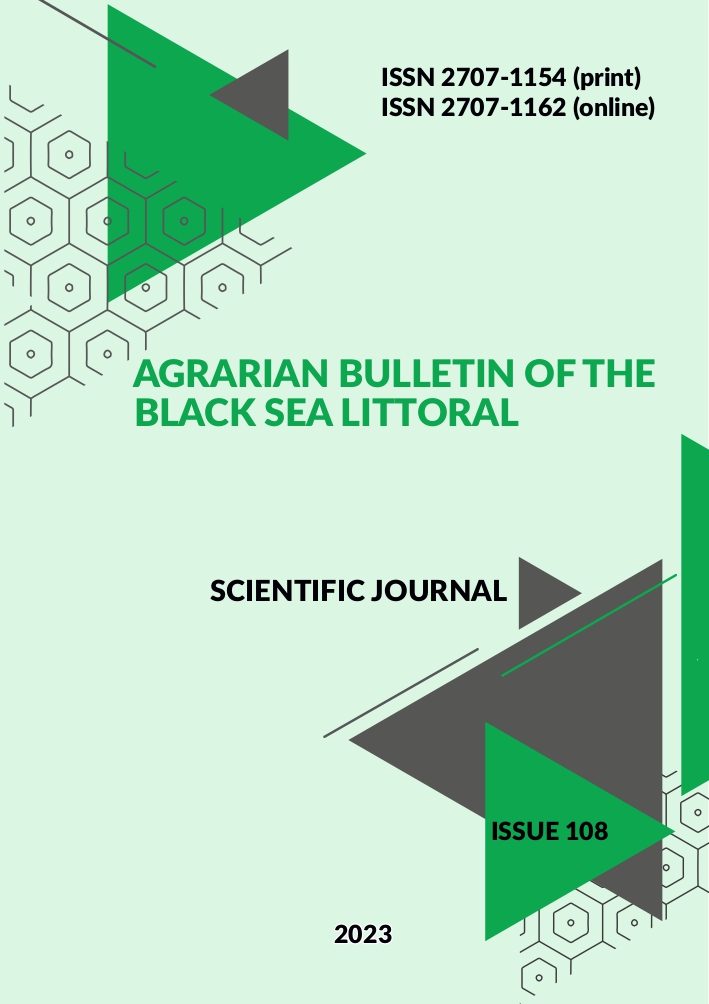THE EFFECT OF THE COMPLEX AGENT ON THE MORPHOLOGICAL AND BIOCHEMICAL INDICATORS OF BLOOD IN CYSTICERCOSIS IN RABBITS
DOI:
https://doi.org/10.37000/abbsl.2023.108.22Keywords:
rabbits, Cysticercus pisiformis, blood, morphology, biochemistryAbstract
The determination of cellular immunity is indicative, as it is of great importance for the diagnosis and treatment of many diseases. Knowledge of control values of hematological and biochemical parameters of blood is useful when assessing rabbit diseases. For experimental cysticercosis in rabbits, the restoration of morphological and biochemical indicators of blood after the use of a complex remedy was recorded for 35 days. The proposed drug restores the content of erythrocytes to the level of 6.05±0.12 T/l and hemoglobin to 102.17±0.69 g/l. The number of leukocytes decreased by 22.2% compared to before using the drug. A positive correlation between leukocyte content and the absolute number of lymphocytes indicates activation of the cellular link of immunity. In the blood serum of rabbits, the content of albumins increased by 3.8%, while globulins decreased by 10.8%. During the entire experiment, there was a tendency to decrease the activity of ALT and AST enzymes and the concentration of circulating immune complexes, seromucoids, which indicates the recovery of the body after the toxic effect of cysticerci and confirms the effectiveness of the treatment.
References
Jia W.-Z., Yan H.-B., Guo A.-J., Zhu X.-Q., Wang Y.-C., Shi W.-G., Chen H.-T. Complete mitochondrial genomes of Taenia multiceps, T. hydatigena and T. pisiformis: additional molecular markers for a tapeworm genus of human and animal health significance. BMC Genomics. 2010. Vol. 11. P. 447. https://doi.org/10.1186/1471-2164-11-447
Domínguez-Roldan R., Pérez-Martínez M., Rosetti M. F.,Arias-Hernández D., Bernal-Fernández G., Flores-Pérez F. I., Hallal-Calleros C. High frequency of Taenia pisiformis metacestodes and high sex- associated susceptibility to cysticercosis in naturally infected wild rabbits. Parasitol Res. 2018. Vol. 117(7). P. 2201‒2206. https://doi.org/10.1007/s00436-018-5907-6
Soltysiak Z., Bednarski M., Piekarska J. Wagrzyca watroby krolika. Medycyna Weterynaryjna. 2007. Vol. 63(10). P. 1255–1257. http://www.medycynawet.edu.pl/archives/125-summary-2007/summary-2007- 10/1390-summary-medycyna-wet-63-10-1255-1257-2007
Cattadori, I. M., Albert R., Boag B. Variation in host susceptibility and infectiousness generated by co-infection: the myxoma-Trichostrongylus retortaeformis case in wild rabbits. Journal of the Royal Society of Interfaces. 2007. Vol. 4(16). P. 831‒840. DOI: 10.1098/rsif.2007.1075
Dasso J. F., Howell M. D. Neonatal appendectomy impairs mucosal immunity in rabbits. Cellular Immunology. 1997. Vol. 182(1), 29–37. DOI: 10.1006/cimm.1997.1216
Archetti I., Tittarelli C., Cerioli M., Brivio R., Grilli G., Lavazza A. Serum chemistry and hematology values in commercial rabbits: preliminary data from industrial farms in Northern Italy. In proc.: 9th World Rabbit Congress, Verona, Italy. 2008. 1147‒1151. https://www.academia.edu/78124086/Serum_chemistry_and_hematology_values_in_commercial_rabbits
_preliminary_data_from_industrial_farms_in_Northern_Italy
Chineke C. A., Ologun A. G., Ikeobi C. O. N. Haematological Parameters in Rabbit Breeds and Crosses in Humid Tropics. Pakistan Journal of Biological Sciences. 2006. Vol. 9. P. 2102‒2106. https://scialert.net/abstract/?doi=pjbs.2006.2102.2106
Jori M. M. The effect of Cysticercus pisiformis on the haematological and biochemical parameters of rabbits in Basrah province. Life Science Archives (LSA). 2016. Vol. 2. Iss. 2. P. 458‒463. http://www.jpsscientificpublications.com/journals/accord1.php?id=8
Duda Y., Shevchik R., Kuneva L. The effect of cysticercosis invasion on the cellular immunity of rabbits. Scientific Horizons. 2019. 81(8). 36‒41. DOI: 10.33249/2663-2144-2019-81-8-36-41
Влізло, В.В., Федорук, Р.С., Ратич І.Б. та ін. (2012). Лабораторні методи досліджень у біології, тваринництві та ветеринарній медицині. Довідник: за ред. В. В. Влізла. Львів: Сполом:764 с. https://www.inenbiol.com/index.php/63-diyalnist/publikaciii/knyhy/349-laboratorni-metody-doslidzhen- u-biolohii-tvarynnytstvi-ta-veterynarnii-medytsyni
Festing, S., & Wilkinson, R. (2007). The ethics of animal research. Talking Point on the use of animals in scientific research. EMBO Reports, 8(6), 526–530. https://doi.org/10.1038/sj.embor.7400993
Simmonds, R. C. (2018). Bioethics and animal use in programs of research, teaching, and testing. In: Weichbrod, R. H., Thompson, G. A. H., Norton, J. N., editors. Management of animal care and use programs in research, education, and testing. 2nd edition. Boca Raton (FL): CRC Press/Taylor & Francis, Chapter 4. https://doi.org/10.1201/9781315152189-4


